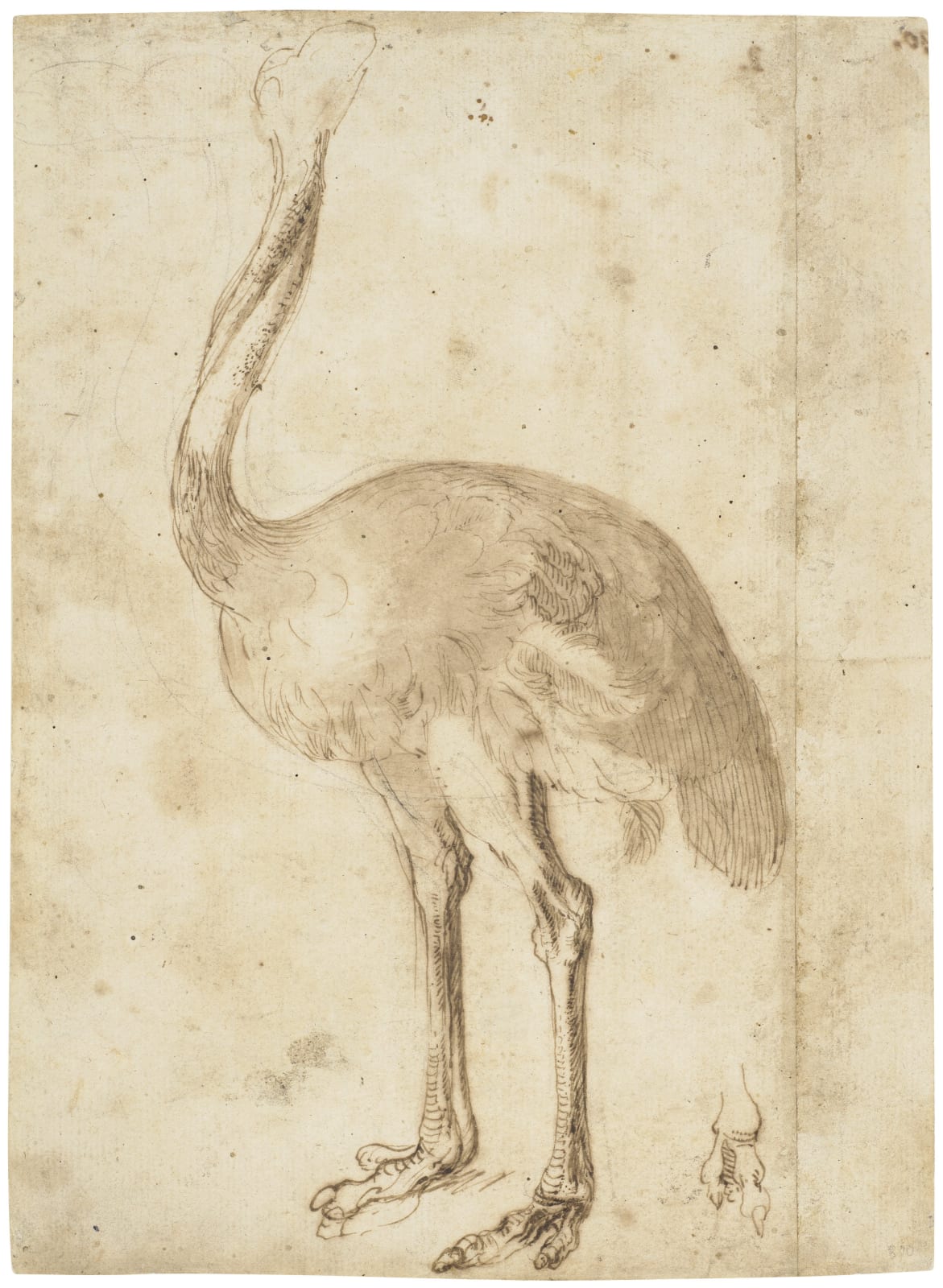Frans Snijders (Antwerpen 1579 - 1657)
Frans Snyders was born in Antwerp in 1579. His father, Jan Snijders, owned a wine inn, which was frequented by many of Antwerp's best and brightest artists (Frans Floris, reputedly, had spent a fortune on drink in the establishment). Snyders was recorded as a student of Pieter Brueghel the Younger in 1593; subsequently he trained with Hendrick van Balen. He became a master of the Antwerp guild of St Luke in 1602. In 1608/9 he travelled to Italy, staying in Rome and afterwards in Milan, where he was introduced - and worked for - Cardinal Borromeo, the famous art collector who had a soft spot for Flemish painting. He returned to Antwerp in 1609 and set up shop there. One of the first - and best - specialized animaliers (painters of animals), he developed a style that would not only hugely influence his pupils, which included painters like Paul de Vos and Jan Fyt, but also many French eighteenth-century artists, such as Jean-Baptiste Oudry and François Desportes. He married Catharina de Vos (the sister of his pupil Paul); the couple would remain childless.
In the 1610's Snyders began collaborating with Rubens, painting the animals in some of his large compositions, such as, for instance, the eagle in Rubens' famous Prometheus Bound (now in the Philadelhia Museum of Art, accession no. W1950-3-1). He received many commissions from wealthy patrons and was soon able to afford a large house on the high-end Keizerstraat in Antwerp, which today is part of the Snijders/Rockoxhuis, a museum partly dedicated to the artist. In the late 1630's, Snyders worked with Rubens on his huge commissions in Spain, which included the famous - now largely lost - hunting pavillion known as the Torre de la Parada. When Rubens died, Snyders acted as one of the appraisers of his extensive art collection. He was fit for the job, as he was quite the collector himself: upon his death in 1657, when the art dealer Matthijs Musson acquired his collection, it included not only works by Flemish giants such as Rubens, van Dyck and Patinir, but also important paintings by some of the leading Dutch painters of the period, such as Willem Claesz Heda.
Although he was quite gifted as a figure painter, Snyders specialized in painting animals and still lifes early on in his career. He was a productive artist, whose colourful compositions are in many a museum or prominent private collection today. Besides paintings, he also produced a body of drawings, often preparatory works and sketches. (A double-sided study sheet with animals and (on the verso) some paint tests was sold by the gallery to the Phoebus Foundation in 2016.) Although the present sheet was given to the Italian artist Giovanni da Udine - a pupil of Raphael who specialized in depictions of animals and plants - in the past, this attribution does not hold up when it is compared to securely attributed works by his hand. Going by its style, it is clear that our drawing is, in fact, a work by a seventeenth-century Flemish master. Furthermore, it is by the same hand as another Study of an Ostrich, now kept at Museum Boijmans van Beuningen, Rotterdam (inv. no. MB 5042), which is given to Frans Snyders, allowing us to attribute it to the same artist.
The ostrich was not unknown in Europe in the seventeenth century. Already the Romans, having imported the so-called Struthocamelus from Africa, bred them in great numbers, praising them for their meat. Elagabalus, who was emperor from AD 218 to 222, considered ostrich brains a particular delicacy, once serving up 600 of them to his undoubtedly delighted guests at a dinner party. In the early modern period ostriches were kept in menageries and parks. The engraver Adriaen Collaert (ca. 1560 - 1610) published a depiction of one in his Avium vivae icones (a series of 32 prints of exotic and domestic birds), although the slightly awkward portrayal of the bird suggests he did not draw it from life. The Flemish artist Roelant Savery (1576 - 1639) probably first saw ostriches in the flesh in Emperor Rudolf II's menagerie, and included them in several paintings. Ostriches were viewed as extraordinary specimens of the natural world: their eggs and feathers were collected for cabinets of curiosities and ostriches were regularly given as gifts at court.
Snijders presumably drew this ostrich from life in the park of the royal palace at Brussels, which was the residence of the Archdukes Albrecht and Isabella. The Archdukes devoted a lot of attention to their park, where they introduced deer as well as a large colony of birds. The park also contained a volière with many specimens not otherwise seen in Flanders. The Archdukes cared much for their feathered friends; they were known to be moved to tears whenever one died. There is evidence that Albrecht and Isabella had an ostrich, as she is seen feeding a deer and a curiously approaching ostrich in Jan Brueghel the Elder's The Archdukes strolling in the Palace Park, now kept in the Rubenshuis, Antwerp.
Provenance
Prince Johann Georg of Saxony (1869-1938), Dresden (according to an inscription on the back of the mount);
Anonymous sale; Christie's, London, 29 November 1983, lot 4;
Nina Griscom, New York, until 2021.
Literature
A.W.F.M. Meij, Rubens, Jordaens, Van Dyck and their circle. Flemish Master Drawings from the Museum Boijmans van Beuningen, Rotterdam, 2001, no. 90.
Publications
A. Nesselrath, ‘Giovanni da Udine disegnatore’, Bollettino Monumenti Musei e Gallerie Pontificie, IX, 2, pp. 282-285, ill.
- X
- Tumblr

